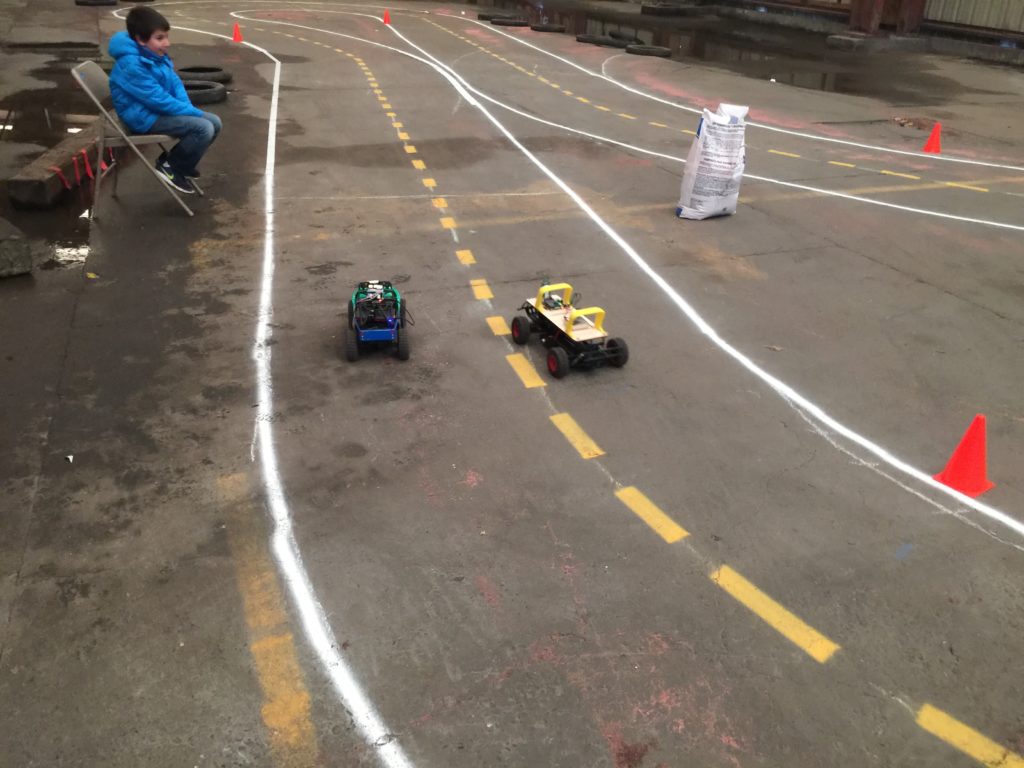Now that our computer and software platforms have improved to the point that we’re reaching the maximum physical speed of cars on regular “kidney-shaped” track without resorting to crazy tires and motors, it’s time to slow things by adding more challenge on the CV/AI side.
There are three standard ways to do this:

1) Always race with at least one other car (“wheel-to-wheel” racing). These “moving obstacles” introduce both randomness as well as the need for smart race tactics to win. Those include:
- Spotting other cars
- Deciding to pass on the inside or outside
- Picking the right time to pass (straightaway, before a curve, after a curve)
- Using AprilTags or other standard computer-readable markers on the back of each car to make them easier to identify
2: Place a cone or other obstacle in the track at some random location before each race. This introduces the following challenges:
- It breaks naive “cone trackers” that assume that cones are stationary and always at the outside of the track
- Requires car to differentiate between “outside” cones (which mark the outside of the curves and must always be passed inside and not touched) and “inside” cones (which can be passed on either side)
- Requires cars to do more than just track the road lines
3: Static obstacles, such as gates, ramps or simulated pedestrians (like the above, from the Sparkfun AVC 2018). This can introduce a number of unique challenges and fun scoring opportunities:
- Having to differentiate by kind of obstacle, such as “pass to right of blue cone but to left of red cone”, or “some blue ramps add points if jumped, but others have spikes and will stop your car”.
- Offer extra points (or subtracted seconds) if the car successfully passes through a hoop or between two markers in tight bottleneck
- More advanced path-finding and decision-making, such as “stop for two seconds if a stop sign is detected” or “stop for detected pedestrians but just steer away from other obstacles”
Starting with the September 21 race in Oakland we’ll do at least #1 and #2; #3 may come later.

Where do I get information about virtual tracks and running virtual races? Physical racing is fine… and fun… but with virtual it allows for better training.